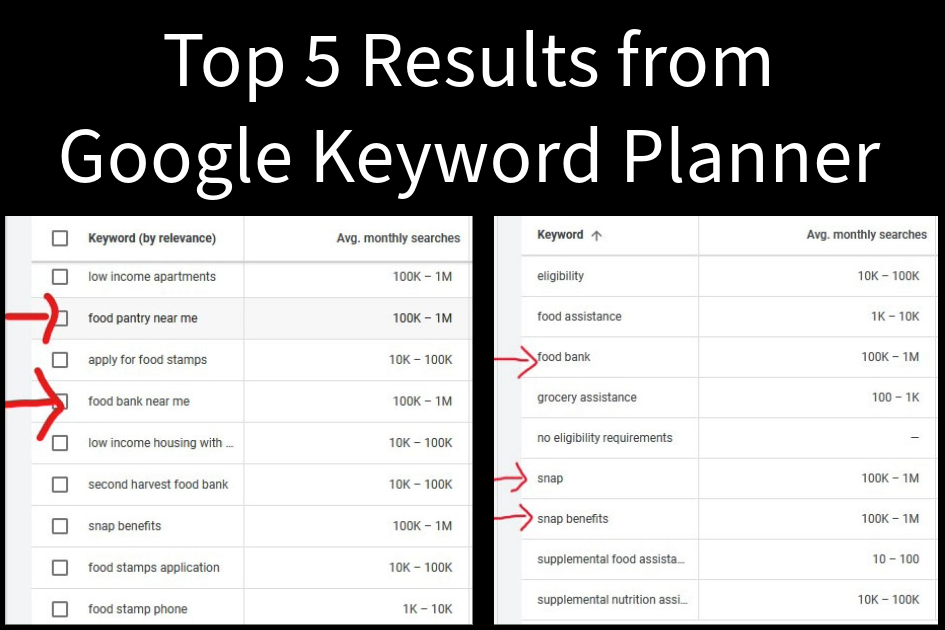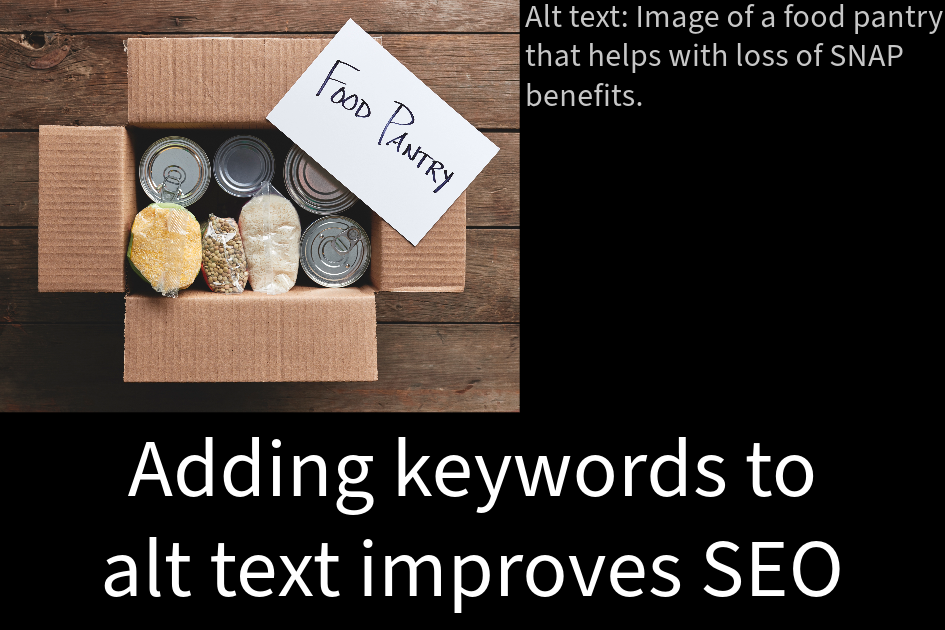Using SEO to Boost Access to Food Assistance

This week, we continued our exploration of user-centered design by studying best practices for writing, structuring, and promoting digital content. Within this context, Search Engine Optimization (SEO) comprises targeted processes to increase the visibility of online content so users can readily find information when searching the Internet.
Food Pantry Promotion
I volunteer at a small food pantry, which, like most community food pantries, provides resources to individuals and families experiencing financial difficulties within a limited geographical area. With the end of Covid-era increases (PDF) to the Supplemental Nutrition Assistance Program (SNAP), there has been an increased demand for pantry services. My goal is to design an SEO strategy to heighten the visibility of the food pantry’s resources among potential clients in the service area.
Strategy Development
In conceptualizing an SEO strategy, my first step was to review the guidelines provided in Search Engine Optimization: Strategies and Best Practices for Effective Online Visibility. The checklist, which addresses everything from copy writing to technical considerations, helped me think through each element of an SEO plan. These considerations prompted me to focus on content optimization as a driving force for the strategy. Creating concise, informative text and relevant visuals will be integral to ensuring the optimized content exhibits good usability.
Keyword Identification
Effective content optimization begins with finding the best keywords. Using Google’s Keyword Planner, I brainstormed words and combinations of words (known as long-tail keywords) to determine those that ranked highest in online searches related to food assistance. The top five terms and phrases, each receiving 100,000-1 million hits, were food bank, SNAP, SNAP benefits, food bank near me, and food pantry near me.
The remaining steps of the content optimization, outlined below, will revolve around effective use of these keywords. Additionally, since “food banks near me” is one of the most searched phrases, it will be important to include the specific towns within the pantry’s service area in conjunction with the keywords.

Text Optimization
The keywords will be incorporated into the website content, especially on the home and food-assistance pages. The Yahoo! Style Guide offers practical strategies for seamlessly integrating keywords into the text, including using three to five keywords per page and repeating keywords every 200 words. Additionally, it recommends adding keywords to page titles, headlines, bulleted lists, and HTML page descriptions.
Visual Optimization
Images and informational graphics will be added to the site to visually relate to the keywords. To promote content comprehension for the visually impaired and to adhere to legal and ethical standards for website accessibility, a description, known as “alt text,” will be added to each image. Alt text provides another opportunity to utilize keywords.

To promote good user experience, it will be important to ensure that image files are not so large that they cause delays in page loading. Effective formatting, labeling, and structuring of the page content, including the use of bulleted lists, will allow users to quickly scan website pages to access desired information.
Other SEO Tactics
Several additional actions can assist the goal of raising the optimized content to the top of search engine results pages (SERPs). Such steps could include ensuring that content optimizations from the main site work well on mobile, using social media to share the updated content or reinforce keywords, and making sure that internal and external hyperlinks reinforce the credibility of the content.
Ongoing work
A Google Analytics account should be established to monitor how the SEO campaign is impacting site traffic. Identifying how to frame content so users can most readily find it should be an ongoing process, which should continued identification and refinement of keywords.




Comments ()